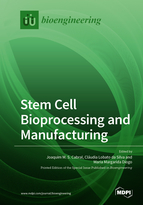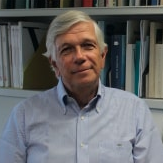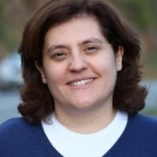Stem Cell Bioprocessing and Manufacturing
A special issue of Bioengineering (ISSN 2306-5354). This special issue belongs to the section "Regenerative Engineering".
Deadline for manuscript submissions: closed (31 May 2020) | Viewed by 60849
Special Issue Editors
Interests: stem cells research for tissue engineering and regenerative medicine; stem cell bioprocessing and manufacturing: development of novel stem cell bioreactors and advanced bioseparation and purification processes
Special Issues, Collections and Topics in MDPI journals
Interests: bone marrow niche; expansion of human stem cells; cellular therapies with stem cells; bioreactors for stem cell culture and production of extracellular vesicles
Special Issues, Collections and Topics in MDPI journals
Interests: the development of scalable platforms for highly controlled expansion and differentiation of human pluripotent stem cells (hPSC), embryonic (hESC), induced pluripotent stem cells (hiPSC); stem cell-based purification strategies; regenerative medicine; drug screening; disease modelling
Special Issues, Collections and Topics in MDPI journals
Special Issue Information
Dear Colleagues,
The next healthcare revolution will apply regenerative medicines using human cells and tissues. The aim of the regenerative medicine approach is to create biological therapies or substitutes in vitro for the replacement or restoration of tissue function in vivo lost through failure or disease. However, whilst science has revealed the potential, and early products have shown the power of such therapies, there is an immediate and long-term need for expertise with the necessary skills to face the engineering and life science challenges before the predicted benefits in human healthcare can be realized. Specifically, there is a need for the development of bioprocess technology for the successful transfer of laboratory-based practice of stem cell and tissue culture to the clinic as therapeutics through the application of engineering principles and practices. This Special Issue of Bioengineering on Stem Cell Bioprocessing and Manufacturing addresses the central role in defining the engineering sciences of cell-based therapies by bringing together contributions from worldwide experts on stem cell biology and engineering, bioreactor design and bioprocess development, scale-up, and manufacturing of stem cell-based therapies.
Prof. Dr. Joaquim M. S. Cabral
Assoc. Prof. Dr. Cláudia Lobato da Silva
Assist. Prof. Dr. Maria Margarida Diogo
Guest Editors
Manuscript Submission Information
Manuscripts should be submitted online at www.mdpi.com by registering and logging in to this website. Once you are registered, click here to go to the submission form. Manuscripts can be submitted until the deadline. All submissions that pass pre-check are peer-reviewed. Accepted papers will be published continuously in the journal (as soon as accepted) and will be listed together on the special issue website. Research articles, review articles as well as short communications are invited. For planned papers, a title and short abstract (about 100 words) can be sent to the Editorial Office for announcement on this website.
Submitted manuscripts should not have been published previously, nor be under consideration for publication elsewhere (except conference proceedings papers). All manuscripts are thoroughly refereed through a single-blind peer-review process. A guide for authors and other relevant information for submission of manuscripts is available on the Instructions for Authors page. Bioengineering is an international peer-reviewed open access monthly journal published by MDPI.
Please visit the Instructions for Authors page before submitting a manuscript. The Article Processing Charge (APC) for publication in this open access journal is 2700 CHF (Swiss Francs). Submitted papers should be well formatted and use good English. Authors may use MDPI's English editing service prior to publication or during author revisions.









